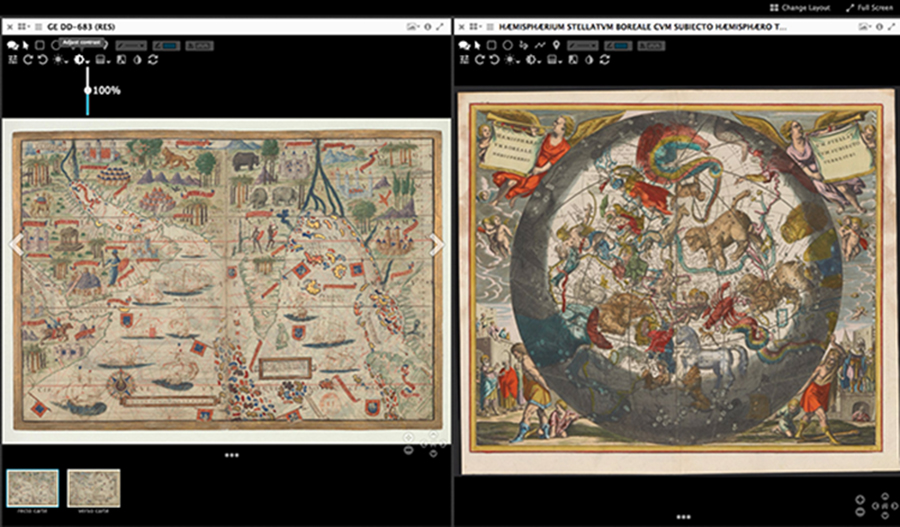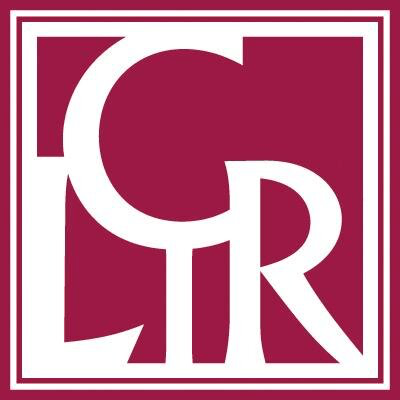By Sheila Rabun
If you have been anywhere near digital image repositories in the past five years, you might have heard of IIIF (pronounced triple-EYE-eff), or the International Image Interoperability Framework. There are several different ways to describe what IIIF is, but a current favorite is that IIIF is a community working together to create, test, refine, implement and promote shared application programming interface (API) specifications for interoperable functionality for digital image repositories. So what exactly is “interoperability,” and why should anyone care?
Imagine a row of silos, all containing different types of grain. Now, imagine the silos as digital image repositories, containing digital images of important cultural artifacts like manuscripts, paintings, sculpture, sheet music, newspapers, maps, carvings, and other fragile, rare, and heavily studied cultural materials. While libraries, archives, and museums have been increasingly making their collection materials available to the public digitally, assets in online repositories have essentially been kept in silos, with incompatible systems and varying user interfaces that place a burden on hosting institutions and limitations on functionality for end-users. Working independently, many institutions have found digital image repositories challenging to maintain, with constantly evolving user needs and ever-changing technology systems as digital content is migrated from one bespoke application to another.
Working together in response to these challenges,the IIIF API specifications were developed to allow for the transfer and sharing of image pixels, metadata, and annotations across repositories and systems. Implementation of the IIIF specifications can provide end-users with the ability to compare images from across multiple repositories and interact with them through deep pan and zoom, image manipulation (size, quality, rotation, etc.), the ability to tag and annotate, search within annotations, and easily share work with others. Several IIIF-compatible image servers and clients are available to choose from, allowing institutions to easily mix and match technologies. The Mirador Viewer (http://projectmirador.org) is just one example of a IIIF-based client that facilitates this kind of functionality:

Cultural heritage institutions across the globe are realizing the power of interoperability and the full potential of providing online access to their collections’ digital surrogates. Institutions such as the Oxford Digital Bodleian Library, the Wellcome Library, the National Library of Wales, Yale Center for British Art, the Qatar Digital Library, the U.S. National Gallery of Art, the British Library, Stanford, Princeton, Harvard, Cornell, the Vatican Library, the University of Tokyo, and at least 70 other national and state libraries, museums, research institutions, software firms, and other organizations, have implemented the IIIF specifications, exposing millions of digital images with interoperable properties. Interest in IIIF has grown as the word continues to spread at conferences and meetings in the digital repository community. The IIIF-Discuss email list has grown to over 600 members, comprising the wider community of individuals and institutions who have expressed interest, used, or implemented IIIF. Additionally, the IIIF Consortium (IIIF-C), formed in 2015to provide sustainability and steering for the initiative, has grown to include 40 institutional members in the past year. The IIIF-C welcomes new members, and any interested institutions that join the IIIF-C before December 2017 will be considered founding members. The IIIF community includes IIIF-C member institutions, implementers, end users, and others who may be watching with interest from afar.
The potential for the use of IIIF and growth of the IIIF community is endless – wherever digital images are present, there is an opportunity for interoperability via IIIF. As the IIIF community of adopters and users continues to grow, potentially including individuals and institutions from different sectors, including DH scholars and researchers of all kinds, science, technology, engineering, and medicine (STEM) communities, publishers, and media organizations, how can we ensure continued participation, maintain an open and welcoming atmosphere, bringing new participants up to speed and making sure that IIIF technical specifications continue to meet evolving use cases?
Current IIIF participants are laying the foundation for continued community growth, with a focus on improving documentation and training materials, facilitating discovery of IIIF resources, and creating more opportunities for participation. While images with IIIF functionality are available from multiple institutions across the globe, there is currently no comprehensive registry or single point of discovery for these resources. Work on a IIIF Discovery Technical Specification will begin in February 2017, with a group of over 30 individuals from 21 different institutions who have come together within the IIIF community framework to improve the discovery process for IIIF resources. Similarly, blogs, software implementations and demos, presentations, and other information about IIIF exist across the web, and IIIF community members are working together to index these materials on an “Awesome IIIF” list, to make it easier for interested parties to learn more about IIIF. As we continue these efforts moving forward, we aim to be flexible and adaptable to change, continuously assessing and improving.
Collaboration and participation have been and continue to be key to the success and adoption of IIIF. Multiple institutions have worked together to create the IIIF specifications, which in turn allows for better collaboration between both implementing institutions and end-users. The IIIF community relies on active participation, discussion, and feedback to meet the evolving needs of both groups, and we invite anyone with an interest to get involved! Opportunities and forums for learning more, asking questions, sharing expertise, and providing input include:
- Joining the IIIF-Discuss email list – anyone is welcome to join
- Following @iiif_io and #IIIF on Twitter
- Attending regularly scheduled IIIF community calls – anyone is welcome to attend
- Participating in one (or more) of the IIIF Community Groups – anyone who is interested may get involved
- Connecting with others at in-person events, including the upcoming 2nd annual IIIF Conference to be held in The Vatican, June 6-9, 2017. All interested parties are encouraged to attend; registration information coming soon!
We look forward to hearing from you!
Sheila Rabun is Community and Communications Officer for the International Image Interoperability Framework (IIIF) Consortium.

